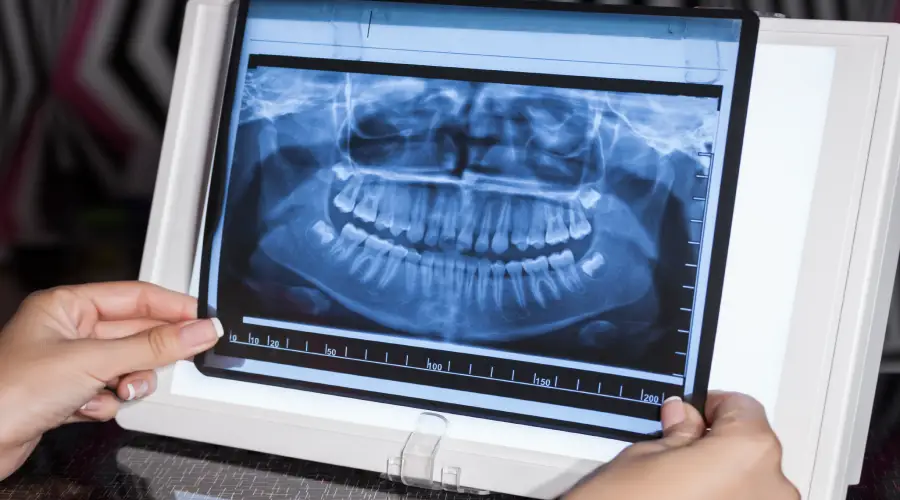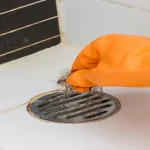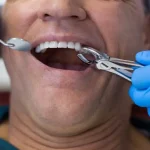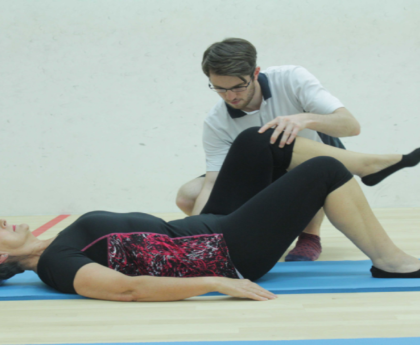Dental x-radiates represent a form of representation of the teeth and mouth. X-radiates are a kind of electromagnetic radiation that is high-energy. The x-radiates invade the body in order to create an image on film or screen. X-bars can be modernized or produced on film. Structures that are too thick (like silver fillings, or even metal manufacturing) block the majority of the light coming into the x-shaft. In dental treatment, the structures appear to be white in the picture. Air-filled structures will appear dim, and teeth, tissues, and fluids will appear as shades of light.
Elective Names
Dental X-bar; Radiograph – dental; Bitewings Periapical film Widely inclusive film Cephalometric bar; High-level picture
How the Test is Performed
The test is performed in the dental expert’s office. There are many types of dental x-radiates. Some of them are:
Bitewing. This shows the crown portions of the bottom and top teeth together when the singular biting tab is placed on the chewing.
Periapical. Displays one or two complete teeth, from the crown to the root.
Palatal (in like manner called occlusal). Gets all the upper or lower teeth in a solitary shot while the film lies on the bite-scraping surface of the teeth.
Comprehensive. This requires an exceptional machine that pivots the head. The x-pillar gets the jaws in general as well as the teeth in a single shot. It’s used to plan treatment for dental supplements, examines for impacted insight teeth, and identify jaw problems. An extensive x-pillar isn’t always the best way to see depressions, aside from assuming that the tooth decay is immediate and substantial.
Cephalometric
Presents the side viewpoint on the face. The article also addresses the jaw’s relationship with each other, as well as in regards to different plans. Finding out the cause of any problems with aeronautics courses is a valuable skill.
Different dental specialists are conducting x-rays with advanced technological advancement. The images are transmitted to computers. The amount of radiation produced during the framework isn’t precisely a regular strategy. There are various kinds of dental x-pillars that provide a 3-layered image of the jaw. Cone bar motorized imaging (CBCT) is a technique that can be utilized prior to any dental procedure for instance, when a couple of supplements are set.
Step-by-step directions to get ready for your Test
The test is performed in the dental expert’s office. There isn’t any unique way to conduct the test. You should dispose of any metal things in the area of the barre receptiveness. The lead cover might be put over your body. Discuss with your dentist as to whether you are expecting.
What the Test will Feel
The x-pillar itself causes no trouble. It is the act of gnashing at the part of the film that makes specific people gag. Slow, substantial breathing through the nose typically reduces the gag reflex. Both CBCT and the cephalometric x-pillar need not bite pieces.
The dental X-beams (radiographs) are pictures of your teeth that your dentist employs to examine the condition of your mouth. These X-beams use low degrees of radiation to capture images of the insides of your teeth and gums. This could assist your dental specialist with distinguishing the causes of problems, like pits, tooth decay, and affected teeth.
Dental X-beams could appear complicated however they’re regular instruments that are basically as significant as your teeth cleanings.
Related Article: Top 10 Tips From Your Dentist And Hygienist
The reason dental X-beams are used
Dental X-radiates are usually performed each year. They happen more frequently in the event that your dentist is monitoring the development of a dental issue or treatment.
The variables that influence how you every now and again, you’ll get dental X-pillars could be:
* The age you are
* your ongoing oral health
* any signs of oral illness
* a past that was contaminated with gum infection (gum infected) or tooth decay
* Accepting at least your new status as a patient, you’ll likely go through dental X-rays so your new dental expert can have a clearer picture of your dental well-being. This is especially huge if you have no X-radiates from your past dental-trained professional.
Children may experience dental X-rays more of the time as compared to adults given the manner their dental professionals may require screening to determine the growth in their teeth as they age. This is critical considering the way that it will assist dentists to determine that a child’s tooth needs to be pulled to stop the chaos, for example, grown-up teeth filling in behind a child’s teeth.
Dental X-rays
Dental X-beams detect problems at the onset in your mouth, teeth gums, and jaw. In the beginning, treating issues before they become more serious could save you money for pain, suffering, and in some cases, even your life.
* Arrangements and ACCESS
* Reach US
What exactly are dental X-rays and why are they needed?
In the rundown of your top things to do, getting an X-beam in the dental practitioner’s office may not be on the list. Wearing that weighty cover and squeezing an awkward gadget between your teeth for even a couple of moments isn’t too much.
In any event, X-beams provide dental professionals with a lot. They assist them in assessing the condition of your tooth as well as the jaw’s position, root structure, and facial bone formation. They likewise help them find and treat dental problems immediately depending on the situation and furthermore with the assistance of Teeth Whitening in Los Angeles.
X-beams are a type of energy that could pass over or consume powerful items. The energy is absorbed by solid objects such as teeth and bones and is visible in X-beams in light-colored regions. X-beams go through less thick objects, such as gums or cheeks, and show up as dim regions on X-beam film.
X-beams can assist with finding problems that aren’t visible through an oral examination. The process of identifying and treating problems at the start of their progress could help you save your money, shield you from uneasiness (on the chance that the issue is addressed later on), and potentially even save your life.
What kind of problems do X-rays help detect?
X-beams aid your dentist in diagnosing problems with your teeth and jaws.
In grown-ups, X-beams show:
* Rot, particularly little areas of rot between teeth.
* Rot underneath existing fillings.
Bone misfortunes in the jaw.
* Changes to the bone or root trench due to contamination.
* Condition and position of teeth in order to plan for dental inserts, support dental implants, false teeth, or alternative dental solutions.
* Abscesses (contamination on the foundation of teeth or between the gum and a tooth).
* Growths and a few kinds of cancers.
In youngsters, X-beams decide:
* In the assumption that rot is creating.
* Assuming there’s enough room in the mouth for each and every tooth that is coming in.
* Assuming teeth are creating.
* Assuming that the teeth may be affected (incapable to emerge into the gums).




